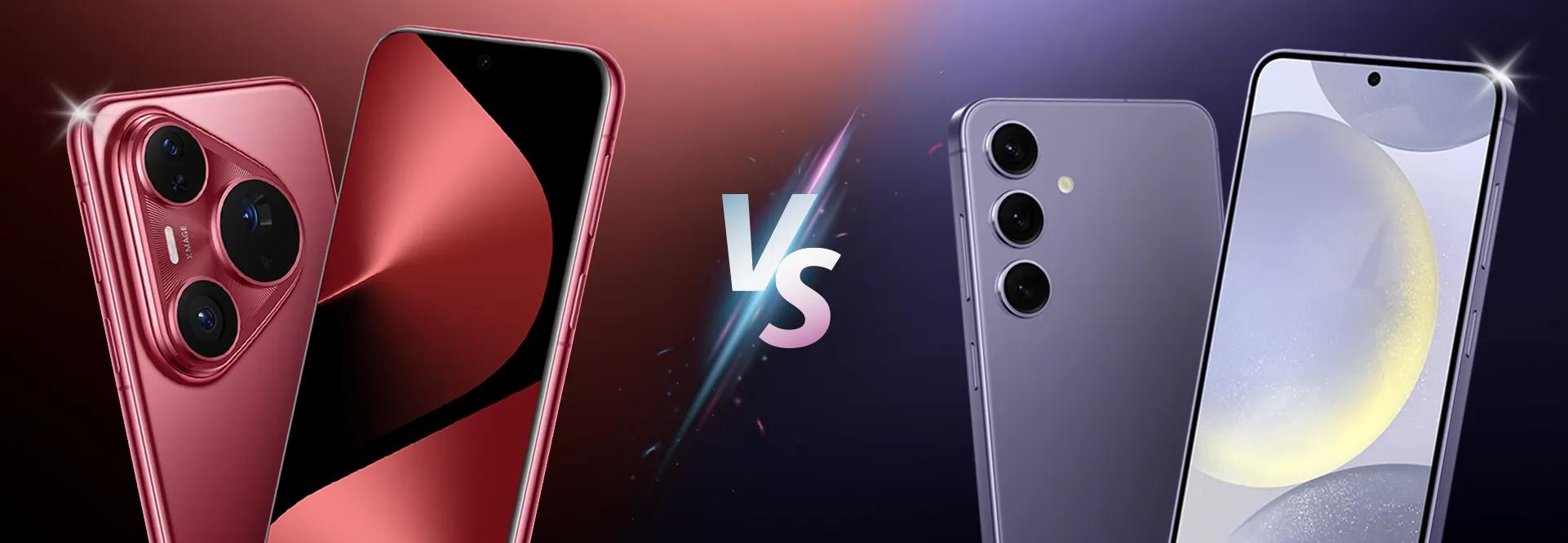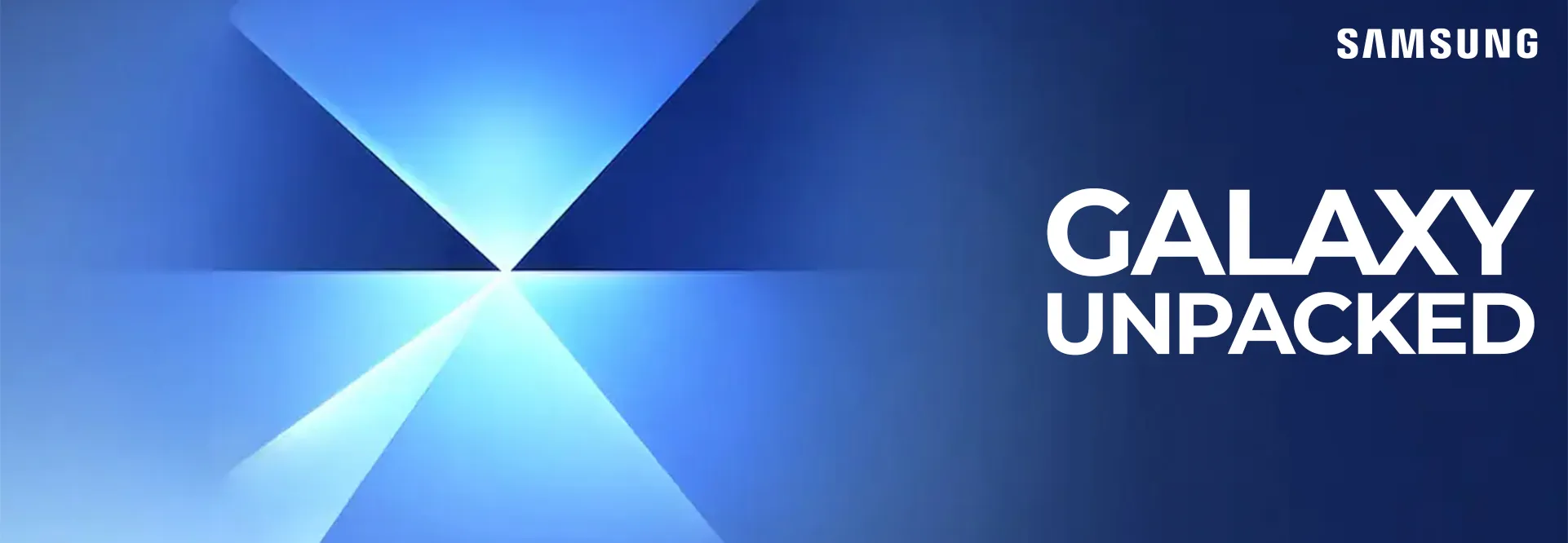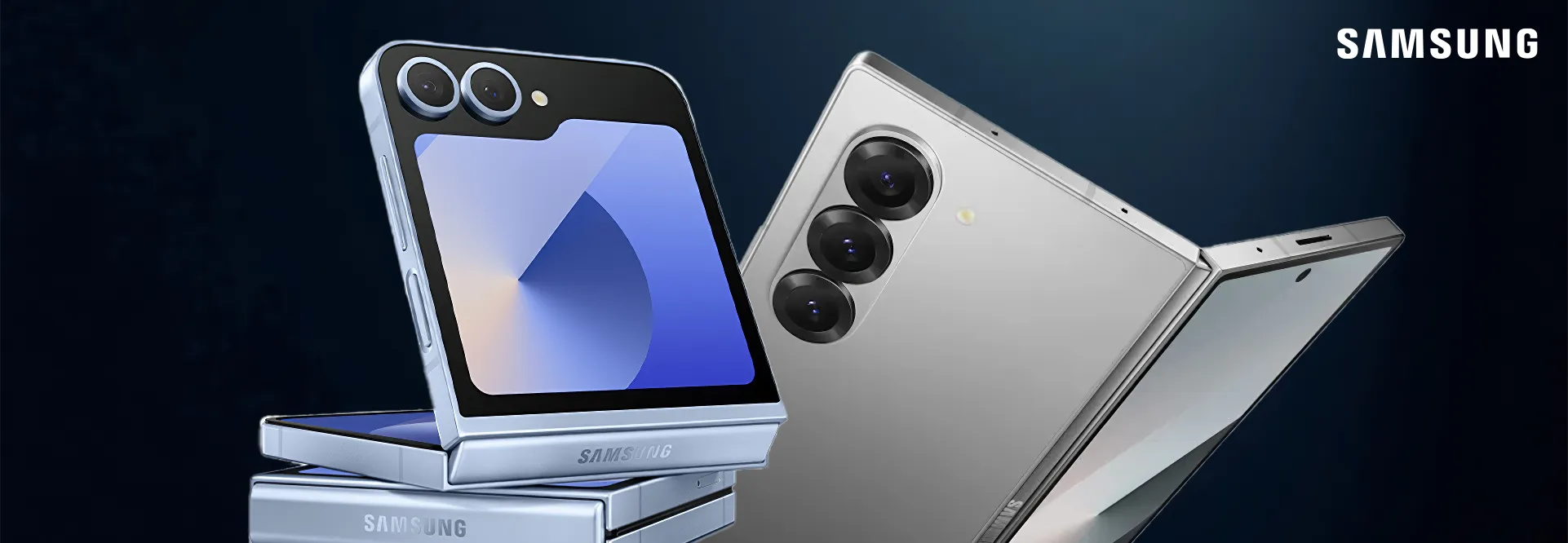Compare the Huawei Pura 80 Pro and Samsung S24 Ultra to find out which smartphone delivers better camera quality, specs and performance.What’s Your Pick?When it comes to high-end smartphones, the Huawei Pura 80 Pro and Samsung Galaxy S24 Ultra are the hottest contenders of 2025 right now. Both packed with powerhouse specs and features that’ll make your tech-loving heart race.They each carry standout cameras, blazing-fast processors and sleek designs to the table. But which one takes the crown overall?We’re breaking down everything you need to know so you can confidently pick the perfect smartphone that’ll keep up with you.DesignHuawei Pura 80 ProThe Huawei Pura 80 Pro rocks a glazed texture finish that is reminiscent of a pool of water. It comes in two eye-catching colours: a sleek black and a vibrant red. The colours really pop in natural light but heads up, the camera island at the back is a bit hard to miss. It’s pretty big and adds some extra bulk to the device as a whole, so if you’re all about slim phones, this one might feel a tad chunky in your hand.On the bright side (literally), the 6.8 inch LTPO OLED display dazzles with up to 3 000 nits of peak brightness and a buttery-smooth 120Hz adaptive refresh rate. Everything looks sharp and scrolling feels silky smooth. It’s the perfect device for gamers or streamers.Durability-wise, the Huawei Pura 80 Pro doesn’t disappoint. It sports 2nd-generation Kunlun glass for solid scratch resistance and carries an IP68 rating which means water, dust and accidental splashes won’t slow you down.Samsung Galaxy S24 UltraThe Samsung Galaxy S24 Ultra has a wider variety of colours to choose from compared to the Huawei Pura 80 Pro. Take your pick from Titanium Grey, Titanium Black, Titanium Violet and Titanium Yellow. If you like your phone to stand out with bold, unique colours, this one’s definitely got you covered.Beyond the colours, the Samsung S24 Ultra sports a sleek titanium exterior paired with a sturdy 6.8 inch flat display that feels premium in the hand. It’s protected by Corning Gorilla Glass Victus 2, built tough to handle everyday knocks and bumps.Plus, it comes with a built-in S Pen for all your note-taking and creative moments and a bright 2 600 nit display that keeps everything crisp and clear.Winner: Beauty might be in the eye of the beholder, but when it comes to choice and build, Samsung clearly pulls ahead here. With a wider range of bold and unique colours, you’ve got plenty of options to match your style. Plus, that titanium frame doesn’t just look premium; it adds serious durability. With the variety of colours and the tough, sleek design, Samsung wins this round.CameraHuawei Pura 80 ProThe Huawei Pura 80 Pro’s camera setup is built to make every shot look amazing. The 50MP 1-inch Ultra Lighting Camera with optical image stabilisation means you get crisp, clear photos even in tricky low light or when your hands aren’t perfectly steady. No more blurry memories.Want to capture those epic landscapes or fit a whole crew into one shot? The 40MP ultra-wide lens has you covered. And for the close-up lovers, the 48MP macro telephoto camera lets you zoom in on the tiniest details without losing any sharpness.Colours pop with stunning accuracy thanks to the Ultra Chroma camera, which uses 1.5 million spectral channels to bring every photo to life.On the selfie side, the 13MP wide-angle front camera with autofocus keeps you looking sharp and perfectly in focus, whether you’re snapping solo or with friends.Samsung Galaxy S24 UltraThe Samsung Galaxy S24 Ultra’s quad rear cameras mean you’re ready for almost any shot. With a massive 200MP main sensor combined with advanced autofocus and optical image stabilisation, this camera helps you capture sharp, steady photos.Zoom is where this smartphone truly shines. With optical zoom options at 3x and 5x, you get closer without losing detail. Then the adaptive pixel sensor takes it further with up to 10x optical-quality zoom. Want to go even farther? The digital zoom goes all the way to 100x so no tiny detail slips past you.On the front, the 12MP selfie camera makes snapping clear, detailed selfies effortless, helping you capture your best side, always.Winner: This one’s a tie. Both devices have excellent camera specs. Choose the Huawei Pura 80 Pro if you want excellent colour accuracy, strong low-light performance and sharp close-up shots. Go for the Samsung Galaxy S24 Ultra if you want the ultimate zoom experience and a huge resolution main camera that captures insane detail.PerformanceHuawei Pura 80 ProPowered by the Kirin 9020 chipset, the Huawei Pura 80 Pro delivers smooth, responsive performance that keeps up with your busiest days. Running on EMUI 15.0, it’s packed with smart AI features and multitasking tools that make your day run easier.With a generous 12GB of RAM and a massive 512GB of storage, you’ve got plenty of room to multitask seamlessly and store all your apps, photos and files without ever worrying about space.Samsung Galaxy S24 UltraThe Samsung Galaxy S24 Ultra runs on the latest Qualcomm Snapdragon 8 Gen 3 chipset delivering top-notch speed and efficiency to power everything you do with ease.On the software front, it comes with Android 14 out of the box, layered with Samsung’s sleek One UI 6.1.1. Samsung promises up to seven major Android upgrades so your phone stays fresh and secure for years to come.With 12GB of RAM and 256GB of storage, this phone effortlessly juggles heavy apps and stores plenty of your photos, videos and files without breaking a sweat.Winner: If raw speed, smooth multitasking and security longevity are your priorities, the Galaxy S24 Ultra’s Snapdragon 8 Gen 3 chipset delivers more power and efficiency. Plus, with up to seven years of software updates, it stays secure and fresh longer. Huawei’s P80 Pro performs great now but we’ll have to wait and see if it can match Samsung’s speed or future-proofing.BatteryHuawei Pura 80 ProThe Huawei Pura 80 Pro packs a solid 5 170mAh battery to keep you powered through a busy day. When it’s time to recharge, HUAWEI SuperCharge offers up to 100W wired fast charging and 80W wireless fast charging so you can top up quickly and get back to what matters without the wait.Samsung Galaxy S24 UltraThe Samsung Galaxy S24 Ultra comes with a 5 000mAh battery that comfortably powers you through long days of multitasking, streaming, gaming and everything in between. Whether you’re juggling work apps, binge-watching your favourite shows or crushing high-graphics games, this battery keeps up without constantly begging for a charge. Plus, Samsung’s software optimisations help manage power efficiently so you get the most out of every percentage.Winner: Huawei wins on raw charging speed and battery size, giving you the power to keep going longer and recharging faster – a must when dealing with load shedding, unexpected power outages or when you tell your date you’re five minutes away but haven’t actually left the house yet.Samsung balances battery life with system efficiency, which helps stretch power throughout the day, but when the lights go out, Huawei has the clear edge in staying powered up and ready.Verdict Both phones are strong contenders, but it comes down to what you need most. Huawei shines when it comes to capturing vibrant, true-to-life colours in photos and powering up quickly with its fast charging- perfect if you love snapping pictures and hate waiting around for your battery to recharge.On the other hand, Samsung stands out for its top-notch performance and promises long-term software updates, which means your phone will stay smooth, secure and up to date for years.So, whether you prioritise stunning camera quality and quick charging or reliable performance and software support, both phones over-deliver on the high-tier experience you expect from this price range. Ready to upgrade?Check out our Huawei Pura 80 Pro and Samsung Galaxy S24 Ultra deals.FAQs1. Which smartphone has the better camera? Both phones feature impressive cameras, but the Huawei Pura 80 Pro excels in colour accuracy and low-light shots, while the Samsung Galaxy S24 Ultra offers superior zoom capabilities and ultra-high resolution for detailed photos.2. How does the performance of the Huawei Pura 80 Pro compare to the Samsung Galaxy S24 Ultra? The Samsung Galaxy S24 Ultra’s Snapdragon 8 Gen 3 chipset provides faster processing and better multitasking efficiency compared to the Huawei Pura 80 Pro’s Kirin 9020, making Samsung the better choice for raw speed and future-proofing.3. Which phone has a better battery life and charging speed? Huawei’s P80 Pro features a slightly larger 5170mAh battery and supports super-fast wired charging up to 100W, while the Samsung S24 Ultra balances its 5000mAh battery with efficient power management and reliable fast charging options.4. What software do the Huawei Pura 80 Pro and Samsung Galaxy S24 Ultra run? The Huawei Pura 80 Pro runs on EMUI 15.0 with smart AI features, whereas the Samsung Galaxy S24 Ultra ships with Android 14 and One UI 6.1.1, plus guaranteed software updates for up to seven years.5. Which phone offers better design and durability? Samsung wins here with a sleek titanium frame and more colour options, along with Gorilla Glass Armor protection. The Huawei Pura 80 Pro offers a glazed texture design with good durability, including IP68 water resistance and Kunlun glass.References:https://consumer.huawei.com/za/phones/pura80-pb ro/specs/https://www.samsung.com/za/smartphones/galaxy-s24-ultra/
Read More...




.png)




